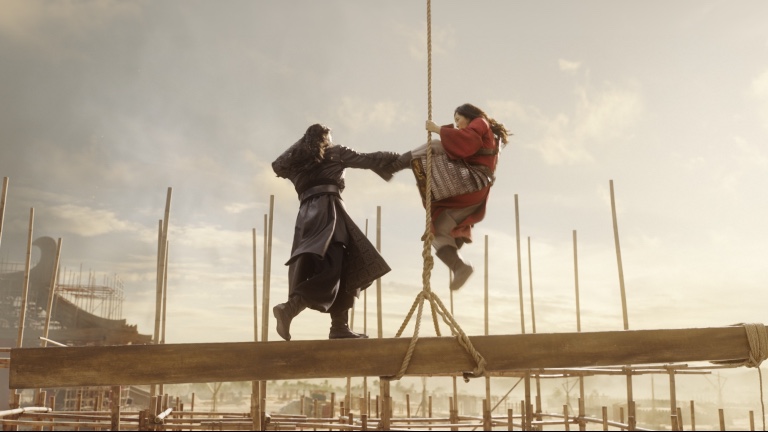
There’s a lot of reasons to be impressed by Disney’s recent live-action Mulan adaptation, directed by Niki Caro (Whale Rider), but the visual effects used to create the medieval Chinese setting and make it so huge and epic, as well as to create some of the film’s magical elements, tend to be front and center.
They’re the work of a pretty enormous Visual FX team, but the name Weta Digital is certainly one that will be familiar to anyone who has been keeping track of their impressive work going back to Peter Jackson’s The Lord of the Rings trilogy, the Planet of the Apes movies and more.
Anders Langlands was the Visual Effects Supervisor for Weta, having already performed similar duties for Robert Rodriguez’s Battle Angel Alita and Matt Reeves’ War for the Planet of the Apes at Weta before a stint at MPC, first in England and then setting up the Montreal visual FX house.
Below the Line spoke with Mr. Langlands over the phone a few weeks back for the following interview:

Below the Line: What was your schooling before you started at MPC?
Anders Langlands: That was my first job after I left university. Before that, I studied computer graphics at Bournemouth University in the UK, which at the time, was I think the only or one of a very, very small number of courses in doing this kind of stuff available in the UK. I think someone did a survey around London soon after I started working and found out that thirty percent of the people working were alumni of that university course. That generated quite a lot of the industry in the UK at the time. This was in 2003-2004 – I’m going to be forty in a month so it’s a sensitive topic for me right now.
BTL: How many years were you at MPC for?
Langlands: I was ten years in London, and then three years in Montreal with a brief sabbatical in between. I started MPC in June 2003, as light and shader on Harry Potter and the Prisoner of Azkaban, which was a lot of fun, and then I did a bunch of different roles over the years. I was light and shaders and then leading the look development team for Prince Caspian, which was our biggest creature show at the time, which was a gigantic movie for us. Then I did a brief spell in R&D looking at rendering stuff, and then I was head of the lighting department for a while and then CG and FX Supervisor, and then decided I wanted to get out of London for a change of scenery, and then MPC opened their Montreal office, so I went over to start that up for X-Men: Days of Future Past, which as the first show we put through there, building a team and trying to do a movie from basically nothing. I was literally the only person there when when I first arrived. One of the clients use to joke that it was just like me with a little lemonade store on the side of the road, which it basically was at the time. That obviously grew and then after a few years in Montreal, I decided I’d have enough of that and came down to New Zealand, because Weta is amazing and does some of the best work in the industry, particularly for creature work, which is something I’m interested in, and also because my fiancé, now wife, is a Kiwi, so we decided to come down here and start a family.
BTL: Weta has been the gold standard for VFX and has been for almost two decades, so what was the first movie you worked on there?
Langlands: My introduction was probably one of the best, which is War for the Planet of the Apes, which as you said, is gold standard for that kind of photo-real performance-based creature work. That was a huge amount of fun, working on that, then I did Battle Angel Alita, which was also really fun. We did a short section on Ad Astra with the monkey in the space station, which was great, taking a lot of the lessons learned doing War for the Planet of the Apes and then scaling it back in a much smaller sequence in a much more lean budget, and then Mulan.
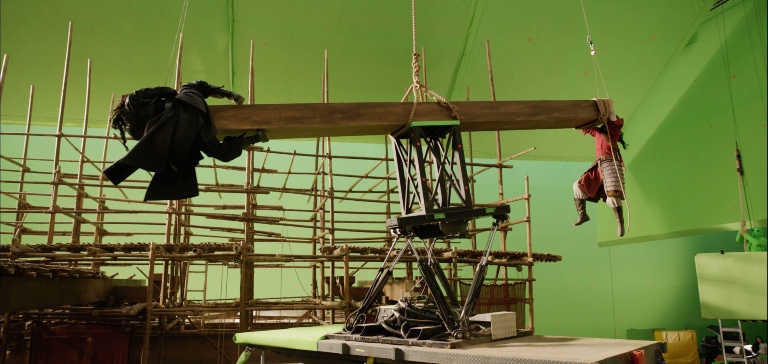
BT: I assume you were brought on fairly early with Mulan after Niki Caro had been hired as a director?
Langlands: Yeah, Niki was already on board and Sean Faden, the Visual Effects Supervisor for Disney. We started talking about it — I feel like it was maybe April 2018 that I first got involved in it. Sean Faden and Diana Giorgiutti, who is the Visual Effects Producer on the Disney side, came down, and we discussed the project and the slate of work that they were looking for. They also visited Weta Workshop as well, who are obviously next door, and who did all the costumes and weapons for the movie, which looked absolutely incredible. We had a great talk with them and looking to see what they were doing, and it was all good fun. They were talking about us taking on the Imperial City work as well as the hawk and the witch stuff. From that early point, we started talking and planning out how we were going to do it. Weta ended up doing all of the scanning services for the show as a whole, so we had our survey and photo team traveling around with main and sometimes second unit, all throughout the production, be it China, New Zealand, wherever. We were heavily involved in the production side of things from that as well, which is great, because it meant that we could get all the data we wanted to our specifications. We can have quite exacting standards, so just having the knowledge of what was going on with the production all the way through was really beneficial as well.
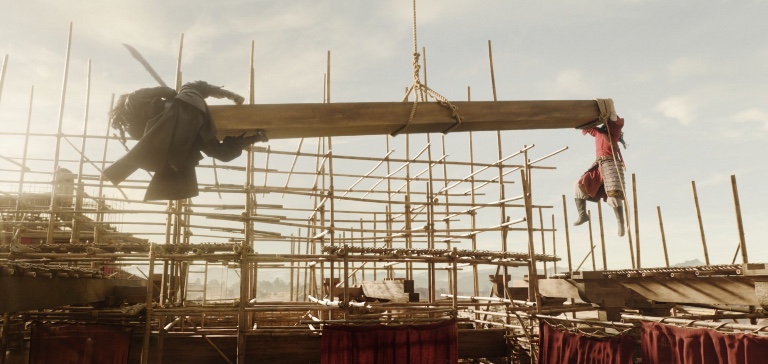
The main time we started was in last week of August or first week of September, we went out to China to Hubai, to a place called XY Studios, where second unit was shooting a whole bunch of plates and reference material. The plan for the production changed a little bit over the summer that year, so what ended up happening was that main unit didn’t go to China, and they shot all of the A-Team onstage and on back lots in Auckland at Kumeu Film Studios. They built partial recreations of some of the locations at XY Studios on the backlot at Kumeu and at Tidal Road, which is another location in Auckland. Normally, we would be generating backgrounds to go in there at a time. The thing was that main unit were shooting after us, so main unit picked up in October and then ran through until 2019. Because the foreground plates afterwards when we were in China to get the background material, we didn’t know exactly what the shots were going to be although everything was storyboarded and prevised, so we had some idea about what was going to be required, but of course you never really know what the director’s going to do until you get cast in front of the camera and start lighting things up, so we needed to cover ourselves for the material that we are getting while we were in China. The location at XY Studios is basically like a backlot-slash-tourist attraction. I think it was initially bought for a Chinese production some years ago, like a Chinese historical epic. It’s kind of like, you know if you go to Universal Studios, and you’ve got the New York backlot set. It’s the same thing, but rather than New York in the 1920s, it’s like a medieval Chinese city.
BTL: I think I recognized some of the places and I wondered were there places that were just there that had been used in other movies?
It’s certainly been used in a lot of Chinese films and productions, including that one with Matt Damon, The Great Wall, they filmed there a little bit as well, so it’s definitely popped up in a few places. We were there for three weeks total, so second unit shot for two weeks, getting stunts and fighting, a lot of that sort, as well as background plates for what we assumed that the shots were going to be, but lining up as best we could without knowing what exactly the foreground plate was going to be. We shot all the background plates in hopes that we’d be able to use them directly, and in some cases they actually could. We also scanned the entire park. It’s about half a kilometer north to south and about the same distance east to west. It’s like scaled-down recreation of Chang’an, which is a medieval capital of the Chinese Empire in the Tang Dynasty, which is sort of when Mulan is set, around that sort of time.
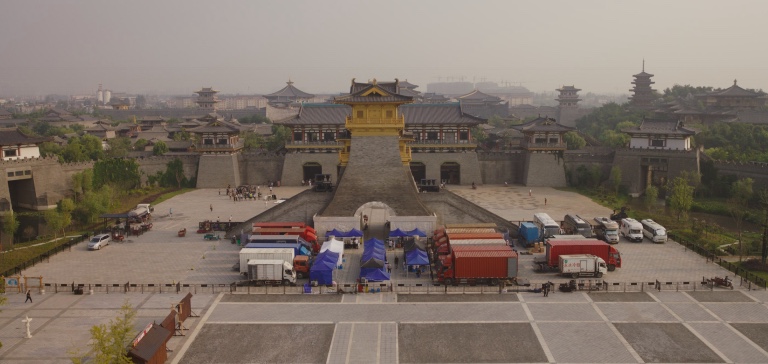
What we did was we scanned the entire place with Lidar and shooting the crap out of it Vertex Vertex Photography, so that we could basically recreate a completely digital version of the main locations that we knew were going to be used to generate new backplates for the stuff. In Auckland, if the cameras or lenses or changed or the action changed from what we were expecting, so that was incredibly useful for that stuff. It also gave us source geometry essentially. We basically took those for the buildings that we’d scanned, and we chopped them up and made kind of like a Lego construction kit from all of the pieces, which we could then put into a system that we developed in Houdini software to procedurally generate buildings, so we could create like an infinite variety of new buildings using the pieces that we created from the scans. We used that to generate the entire city for the big, wide establishing shots, and we did that looking probably as authentic and historically accurate as possible within reason and the demands of the project. We looked at a lot of historical information about how city planning at the time and like how things would actually be constructed and then using the same software we created a rule set that would allow us to procedurally lay out all of the buildings the entire city all in one go. The Imperial City as it is in the film isn’t supposed to be any particular historical location. We based it pretty heavily on Chang’an, because it’s roughly the right time period, and it was a very big impressive city and the same area as Manhattan with over a million people living there. Because it’s this big, impressive place, there was a huge amount of research being done about it, so we were able to find lots of information, like maps of it, detailing the layout of the city, as well as locations of various different temples and notable public figures, administrators, government officials, that kind of thing. We used that then to define which parts of the city would be richer or poorer and then use that in the procedural layout system, we could then just generate the entire city, basically, based on those rule sets very quickly, as well as move things around to taste and have the city rebuild itself around those creative changes. You can imagine with something the size of Manhattan trying to place every individual building by hand would take a huge amount of time whereas with the the system we built, we could just shuffle things around to taste and have it generate the city for us, which is really helpful.
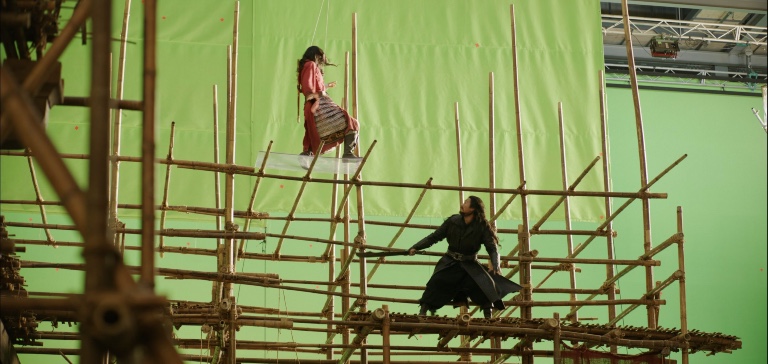
BTL: Were they shooting a lot on green screen sets or did they have some green screen in every set they were building in Auckland?
Langlands: Yeah, in the third act of the movie when Mulan is rushing to stop Bori Khan from killing the Emperor, her and her posse have to fight their way through various locations in the city, so we knew what those locations would be, and then the other department built partial sets for those with green screen in Auckland, so they shot a lot of the action there and then we just replaced the green screens either with plates that shot in China or more often with digital versions that we built using the same source material.
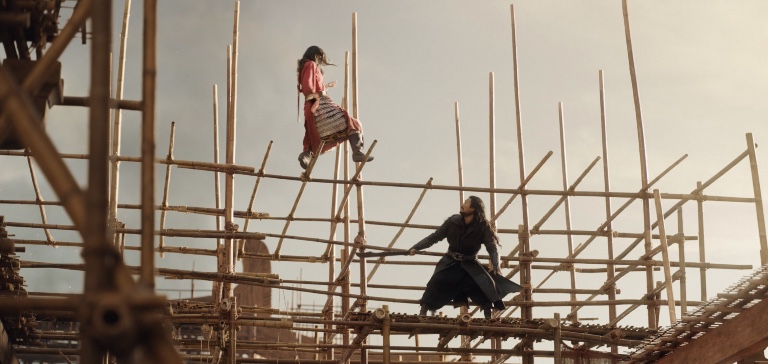
BTL: I want to switch gears and talk about what’s going on right now with COVID and how Weta has been adjusting to it. New Zealand is one of the countries that has figured out how to deal with it and got through it. Have a lot of things changed in the way you work over the last six months?
Langlands: Yeah, it’s been a huge change. When it became apparent that COVID was here and was spreading rapidly, no one knew exactly what the government was going to do. I think it was assumed that there’d be some kind of lockdown, so lots of people at Weta works started to put in place the measures that would be needed to get everybody working from home remotely. When we finally did got into lockdown, there was a press conference on a Monday from the Prime Minister Jacinda Ardern, saying, “We’re now in Level Three, and then in 48 hours, we’ll be in Level Four,” which basically means everyone stays inside. One person from each household can go out for groceries and that’s it — everyone else has to stay indoors apart from a little bit of exercise. A full-on lockdown. We basically had 48 hours to get everybody from working in the system to working at home, which is like a Herculean effort by the IT and tech teams in particular. A lot of people don’t have machines at home that are suitable for remoting in and working, so they had to build or convert workstations that we’d be using in the office, get all the software installed so that people could use them at home and get everyone set up. It’s amazing that they actually got everybody ready in 48 hours, and and it was pretty seamless to be honest. There were teething troubles technologically, but for the most part, everything just worked. It was really amazing to see how well the team at Weta got everything set up and got everyone able to work, and then we were working four to six weeks in a lockdown state, and then as the infection started to ease, we’ve now been filtering people back into the offices starting with the projects that are delivering sooner. I think a lot of people in our back in, not everybody, and some people are sort of choosing to carry on working from home, which is great to be able to do.
BTL: You obviously finished Mulan before the lockdown, because I know it premiered in the States in March, so are you working on something else or preparing something else?
Langlands: Yes, I am. I don’t know what I can say. I probably can’t say I don’t think.
(Below the Line did a little research after the call and discovered that Weta is working on Matt Reeves’ The Batman, which makes sense considering their previous collaboration on War for the Planet of the Apes.)
You can also read what Langlands said about one particularly impressive sequence Weta made happen for Mulan in last week’s “Making the Scene.”
On top of being available on Disney+ at an additional price, Mulan will also now be available on Vudu and Fandango NOW starting Tuesday, October 6 for $29.99. You can read Below The Line’s review right here.





